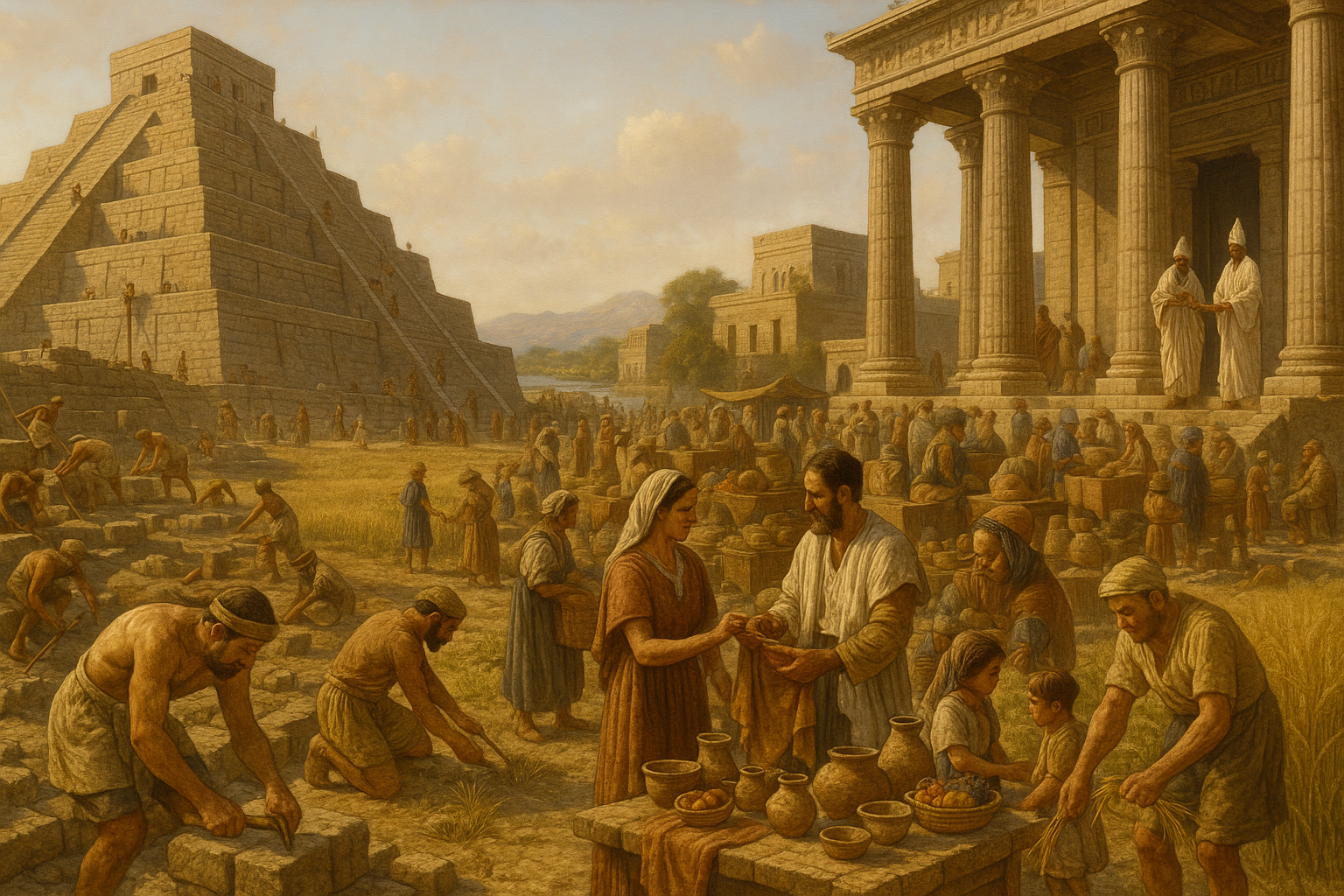In the heart of the Atlantic Ocean, where the waves whisper ancient secrets to the shores of volcanic landscapes, lies a captivating mystery woven into the culture of the Canary Islands. Beyond the breathtaking vistas and vibrant festivals, these islands hold an auditory marvel that echoes through their lush valleys and rugged terrains—a whistled language, known as Silbo Gomero, that defies the ordinary boundaries of communication. This enchanting tradition, unique to the island of La Gomera, transcends the limits of spoken word and emerges as a melodic dialogue passed down through generations. As we embark on a journey to uncover this remarkable cultural treasure, prepare to be transported into a world where whistles carry the weight of words, where history sings through the air, and where human ingenuity meets nature’s call. 🎶
The roots of this whistled language stretch back centuries, long before the conveniences of modern technology. In an era when the island’s rugged landscape posed significant challenges to communication, the inhabitants of La Gomera crafted a linguistic symphony that could traverse the distance between steep ravines and lush valleys. Imagine standing on one side of a vast gorge and hearing a conversation float across to the other side, carried not by the wind alone but by a carefully orchestrated series of whistles. This ingenious adaptation allowed the people to overcome geographical obstacles, turning the very elements of nature into conduits for their thoughts and emotions. It is a testament to the resilience and creativity of the human spirit, a reminder that necessity is indeed the mother of invention.
As we delve deeper into the nuances of Silbo Gomero, we’ll explore the structure and function of this whistled language. Unlike traditional spoken languages, where vocal cords shape words, Silbo relies on variations in pitch and rhythm to convey meaning. Each whistle represents a phonetic element, mimicking the sounds of spoken Spanish, yet transformed into a melodious code. This transformation requires a profound understanding of both language and melody, a skill traditionally imparted from elder to youth, ensuring its survival through the ages. We’ll examine the efforts made to preserve this intangible heritage, recognizing it not only as a cultural artifact but as a living testament to the islanders’ identity and ingenuity.
In this exploration, we’ll also address the significance of Silbo Gomero in contemporary times. Despite the prevalence of modern communication technologies, the whistled language continues to hold a cherished place in the hearts of the Gomerans. It serves as a symbol of cultural pride and a bridge connecting past to present, fostering a sense of community among islanders and drawing intrigue from linguists and travelers worldwide. The preservation of Silbo is more than a linguistic endeavor; it is an act of cultural preservation, a commitment to honor the voices of ancestors who once called to each other across the dramatic landscapes of La Gomera. Join us as we uncover the enchanting world of the Canary Islands’ whistled language—a melodic tradition that sings the story of a people and their enduring connection to the land they call home. 🌿
The Origin and History of the Whistled Language
The Canary Islands, a stunning archipelago off the northwest coast of Africa, are renowned not only for their breathtaking landscapes and rich biodiversity but also for their unique cultural traditions. Among these is the intriguing whistled language known as “Silbo Gomero,” which has been passed down through generations on the island of La Gomera. This whistled language, recognized by UNESCO as an Intangible Cultural Heritage, has a rich history that dates back to the early inhabitants of the islands, known as the Guanches. These indigenous people, believed to have arrived from North Africa, used the whistled language as an efficient means of communication across the challenging terrains of the islands.
The whistled language served a critical function for the Guanches, allowing them to send messages over long distances without the need for physical travel. The rugged landscapes, with their steep cliffs and deep valleys, made traditional forms of communication impractical. The sound of whistles could travel as far as five kilometers (about 3 miles), enabling islanders to convey important information such as the arrival of ships, warnings about weather changes, or calls for community gatherings. As Spanish colonization took hold in the 15th century, the whistled language adapted to incorporate elements of the Spanish language, ensuring its survival and continued relevance in a rapidly changing world.
Today, Silbo Gomero is celebrated not only as a linguistic curiosity but as a symbol of cultural resilience and identity for the people of La Gomera. The language is taught in schools on the island, ensuring that new generations appreciate and preserve this unique form of communication. Furthermore, the global recognition of Silbo Gomero has sparked interest and research into other whistled languages around the world, highlighting the incredible diversity and adaptability of human language. By exploring the origins and history of the whistled language, we gain a deeper understanding of the innovative ways humans have adapted to their environments throughout history.
The Structure of Silbo Gomero
Silbo Gomero is not simply a series of random whistles but a structured linguistic system that mirrors the phonetic elements of spoken Spanish. The language consists of specific whistle patterns that correspond to the vowels and consonants of Spanish, enabling complex messages to be conveyed accurately. This adaptability is one reason Silbo Gomero has endured over centuries, demonstrating the flexibility and ingenuity of human communication. For instance, different pitches and lengths of whistles are used to differentiate between vowels, while various combinations of tones replicate consonant sounds.
To understand the intricacies of Silbo Gomero, one must first appreciate its fundamental components. The language primarily uses variations in pitch and intensity to distinguish between different phonetic elements. Vowels are expressed through distinct whistle pitches, while consonants are represented by modulating the transition between these pitches. This method allows the whistler to replicate the rhythm and intonation of spoken language, making it possible for listeners to discern not only individual words but also the overall meaning of sentences.
The teaching and preservation of Silbo Gomero involve both theoretical and practical components. In schools on La Gomera, students learn the linguistic principles underpinning the whistled language alongside traditional language instruction. This dual approach ensures that learners not only memorize the whistle patterns but also understand their phonetic significance. Through practice and immersion, students develop the ability to both produce and interpret the whistles, allowing them to communicate effectively with others who are proficient in Silbo Gomero. The dedication to teaching this language highlights the community’s commitment to preserving its cultural heritage while fostering linguistic innovation.
Applications and Modern Relevance
Despite the technological advancements that have transformed global communication, Silbo Gomero remains a vital part of life on La Gomera. The language is not only a cultural treasure but also a practical tool, particularly in areas where modern communication infrastructure is limited or unreliable. Farmers and shepherds, for instance, continue to use the whistled language to coordinate activities across the island’s challenging terrain, demonstrating its enduring utility in everyday life. Moreover, the global interest in Silbo Gomero has positioned the island as a center for linguistic tourism, attracting visitors eager to experience this unique tradition firsthand.
The modern relevance of Silbo Gomero extends beyond its practical applications on La Gomera. In an era characterized by digital communication and globalization, the whistled language offers valuable insights into the diversity and adaptability of human language. Linguists and anthropologists study Silbo Gomero to explore the cognitive and social aspects of whistled communication, gaining a deeper understanding of how humans have developed alternative linguistic systems in response to environmental challenges. This research has broader implications for the study of language evolution and the development of communication technologies that mimic human linguistic capabilities.
Furthermore, the recognition of Silbo Gomero as a cultural heritage has sparked interest in the preservation and revitalization of other endangered languages worldwide. As communities around the globe strive to maintain their linguistic traditions in the face of globalization, Silbo Gomero serves as an inspiring example of cultural resilience and innovation. The efforts to preserve this whistled language underscore the importance of safeguarding linguistic diversity and highlight the role of language in shaping cultural identity and community cohesion.
Comparison with Other Whistled Languages
Whistled languages, while rare, are not unique to the Canary Islands. Similar systems of communication have been discovered in various parts of the world, each adapted to the specific needs and environments of its users. These languages provide fascinating insights into the universality and diversity of human communication, showcasing the creative ways in which different cultures have harnessed the power of sound to overcome geographical and social barriers.
The table below presents a comparison of Silbo Gomero with other notable whistled languages from around the world:
| Language | Region | Primary Use | Key Features |
|---|---|---|---|
| Silbo Gomero | La Gomera, Canary Islands | Long-distance communication | Mirrors phonetic elements of Spanish |
| Mazateco Whistles | Oaxaca, Mexico | Everyday communication | Used alongside spoken Mazateco |
| Chepang Whistles | Nepal | Long-distance communication in forests | Based on tonal language structure |
| Akha Whistles | Thailand | Communication among hunters | Incorporates tonal variations |
Silbo Gomero vs. Mazateco Whistles
One of the most notable comparisons can be made between Silbo Gomero and the whistled language used by the Mazateco people in Oaxaca, Mexico. Both languages serve as a testament to the adaptability of human communication in response to challenging environments. However, while Silbo Gomero is primarily a tool for long-distance communication, Mazateco whistles are integrated into everyday interactions, used alongside spoken language to enhance communication in noisy or crowded settings.
Mazateco whistles share a similar phonetic structure with the spoken Mazateco language, allowing speakers to alternate seamlessly between spoken and whistled forms. This integration showcases the linguistic flexibility of the Mazateco people and highlights the role of whistled languages in facilitating social interaction in diverse environments. The use of whistles in Mazateco culture exemplifies the ways in which communities adapt their communication strategies to suit their unique needs and circumstances.
Silbo Gomero in Global Context
The global context of whistled languages provides valuable insights into the broader implications of Silbo Gomero and its counterparts. These languages illustrate the universal human capacity to develop innovative communication methods in response to environmental and social challenges. The study of whistled languages not only enriches our understanding of linguistic diversity but also informs contemporary efforts to preserve endangered languages and promote cultural heritage.
The resilience of whistled languages in various regions underscores the importance of preserving linguistic diversity as a means of maintaining cultural identity and fostering community cohesion. As globalization and technological advancement continue to shape communication, the survival and revitalization of whistled languages offer valuable lessons in cultural adaptability and innovation. By exploring the global context of whistled languages, we gain a deeper appreciation for the rich tapestry of human communication and the enduring legacy of linguistic creativity.
The Future of Silbo Gomero
Looking to the future, the preservation and promotion of Silbo Gomero remain vital to ensuring its continued relevance and significance. Initiatives aimed at integrating the language into educational curricula on La Gomera have been successful in fostering a new generation of whistlers who are not only proficient in the language but also passionate about its cultural importance. These educational efforts serve as a model for similar initiatives worldwide, emphasizing the role of education in preserving linguistic heritage.
In addition to formal education, community engagement and awareness-raising activities play a crucial role in sustaining interest and participation in Silbo Gomero. Festivals, workshops, and cultural events celebrating the whistled language provide opportunities for locals and visitors alike to experience its unique qualities and learn about its historical significance. These activities not only reinforce community pride but also attract international attention, drawing visitors eager to witness the living tradition of Silbo Gomero firsthand.
To further explore the rich tradition of Silbo Gomero, watch this insightful video on its cultural significance: The Enchanting Whistled Language of the Canary Islands
Challenges and Opportunities
Despite the successes in preserving Silbo Gomero, challenges remain in ensuring its long-term survival. As global communication trends shift towards digital platforms, the relevance of traditional communication methods like whistling may be called into question. However, this also presents opportunities to integrate modern technology with traditional practices, creating innovative solutions that enhance the visibility and accessibility of Silbo Gomero.
Collaborations between linguists, technologists, and cultural advocates have the potential to develop digital resources and applications that promote the whistled language in new and engaging ways. These innovations could include interactive language learning apps, virtual reality experiences, and online platforms that connect whistlers across the globe. By embracing technology, the community can ensure that Silbo Gomero remains a dynamic and evolving cultural asset in the 21st century.
Global Impact and Cultural Significance
The impact of Silbo Gomero extends beyond the shores of La Gomera, serving as a symbol of cultural resilience and innovation. Its recognition as an Intangible Cultural Heritage by UNESCO underscores the global importance of preserving linguistic diversity and safeguarding intangible cultural assets. The story of Silbo Gomero resonates with communities worldwide, inspiring efforts to revive and celebrate indigenous languages that face similar challenges of decline and marginalization.
The cultural significance of Silbo Gomero lies not only in its linguistic uniqueness but also in its role as a powerful reminder of the diverse ways humans have adapted to their environments. By cherishing and promoting this whistled language, the people of La Gomera contribute to a broader narrative of cultural preservation and innovation, demonstrating the enduring power of language as a tool for connection and expression. The legacy of Silbo Gomero serves as a testament to the rich and varied tapestry of human communication, inspiring future generations to explore and embrace the linguistic heritage of their own communities.

Conclusion
**Conclusion: Embracing the Melodic Legacy of the Canary Islands’ Whistled Language**
In exploring the captivating world of the Canary Islands’ whistled language, we have traversed through the rich cultural tapestry of a tradition that is as melodious as it is ingenious. This unique form of communication, known as “Silbo Gomero,” serves as a testament to human creativity and adaptability, allowing the inhabitants of La Gomera to converse across vast distances in a terrain marked by its rugged landscapes and deep ravines.
One of the key points addressed in this article is the historical context of Silbo Gomero. Tracing its origins back to the indigenous Guanche people, this whistled language has evolved over centuries, demonstrating an incredible resilience and adaptability. Despite the challenges posed by modernization and technological advancements, which have rendered many traditional practices obsolete, Silbo Gomero has survived, thriving as a vibrant emblem of cultural heritage. This survival has been largely due to the concerted efforts to preserve the language, including its incorporation into educational curricula in the Canary Islands, ensuring that new generations continue to carry forward this melodious legacy.
Moreover, the article delved into the mechanics of Silbo Gomero, unraveling the linguistic structure that enables it to convey complex messages. By transforming spoken Spanish into distinct whistled tones, practitioners of Silbo Gomero can effectively communicate across distances of up to five kilometers. This remarkable feat is achieved through variations in pitch and length of whistles, which correspond to the phonetic elements of Spanish, allowing for a surprisingly rich and nuanced exchange of information.
Another significant aspect discussed is the cultural and social impact of Silbo Gomero. It is not merely a tool for communication but a profound expression of identity and community. The language embodies the spirit of the Canarian people, their history, and their deep connection to the land. By preserving Silbo Gomero, the community maintains a link to its ancestral roots, fostering a sense of pride and belonging among the inhabitants.
The importance of Silbo Gomero extends beyond the boundaries of the Canary Islands. It serves as an invaluable example of intangible cultural heritage, highlighting the diversity and richness of human expression worldwide. UNESCO’s recognition of Silbo Gomero as a Masterpiece of the Oral and Intangible Heritage of Humanity in 2009 underscores its global significance and the need for its preservation.
In reinforcing the importance of this topic, it is crucial to recognize that the survival of traditional practices like Silbo Gomero hinges on awareness, appreciation, and active participation. As readers, we are encouraged to delve deeper into this enchanting tradition, whether by visiting the Canary Islands, engaging with the community, or learning the basics of the whistled language ourselves. By doing so, we contribute to the ongoing narrative of cultural preservation and celebration.
Furthermore, in an increasingly interconnected world, Silbo Gomero reminds us of the value of unique cultural expressions and the lessons they offer in creativity, resilience, and community. This whistled language stands as a powerful symbol of how culture can adapt and thrive in the face of modern challenges, providing inspiration for the preservation of other endangered traditions globally.
As we conclude this exploration, let us reflect on the enchanting legacy of Silbo Gomero and the myriad ways it enriches our understanding of human communication and cultural diversity. Let us embrace this melodic tradition and its teachings, sharing its story with others and encouraging dialogue around the preservation of cultural heritage.
We invite you to engage with this topic further by leaving comments, sharing your insights, or applying what you’ve learned to your own cultural explorations. Together, we can celebrate and sustain the rich tapestry of human expression, ensuring that future generations can continue to learn from and be inspired by traditions like Silbo Gomero.
For those interested in further research, we recommend exploring additional resources such as the
Toni Santos is a visual storyteller and experimental artisan whose work explores the strange frontiers where science meets art. Fascinated by the forgotten, the obscure, and the wonderfully absurd, Toni brings bizarre scientific experiments to life through provocative visual narratives and handcrafted creations that blur the line between curiosity and discovery.
His journey is rooted in a passion for the eccentric side of science — from electric shocks on cadavers to botany in hostile environments, from Victorian medical oddities to animal behavior gone rogue. Each project Toni undertakes sheds light on real (and sometimes questionable) scientific ventures that push the boundaries of human understanding.
With a background in visual design and hands-on craftsmanship, Toni blends artistic precision with conceptual boldness. His creations aren’t just decorative — they provoke, disturb, and invite the viewer to reconsider what counts as science, progress, or even sanity. Often inspired by true experiments — like galvanic resurrection, psychological endurance tests, or 19th-century pseudo-science rituals — Toni’s work reanimates these bizarre chapters of history with aesthetic intrigue and critical reflection.
As the creative force behind Vizovex, Toni invites you to explore a world where the strange becomes symbolic, the grotesque becomes beautiful, and every experiment tells a story worth unearthing.
His work pays tribute to:
The brilliant madness of forgotten experiments
The symbolic power of science at the edge of reason
The beauty in questioning what we think we know
Whether you’re a curious mind, a lover of scientific history, or simply drawn to the uncanny, Toni welcomes you to explore a realm where aesthetics and absurdity collide — one experiment, one mystery, one creation at a time.





